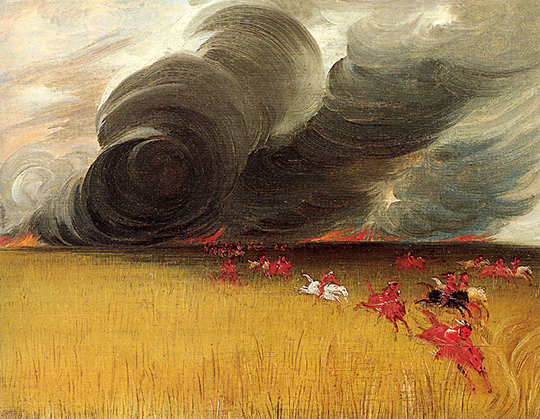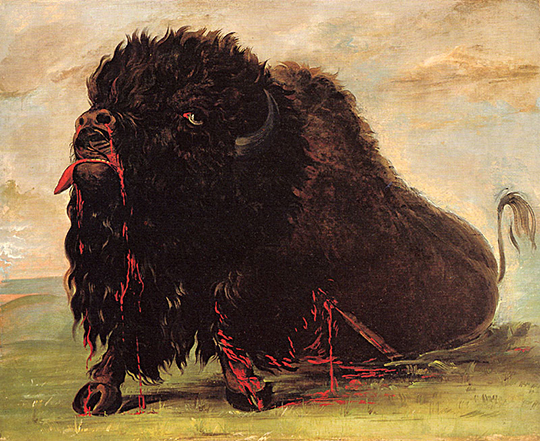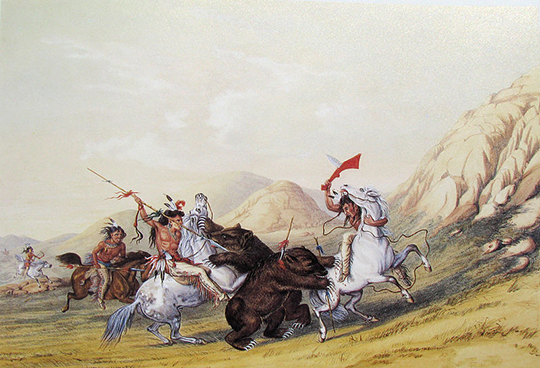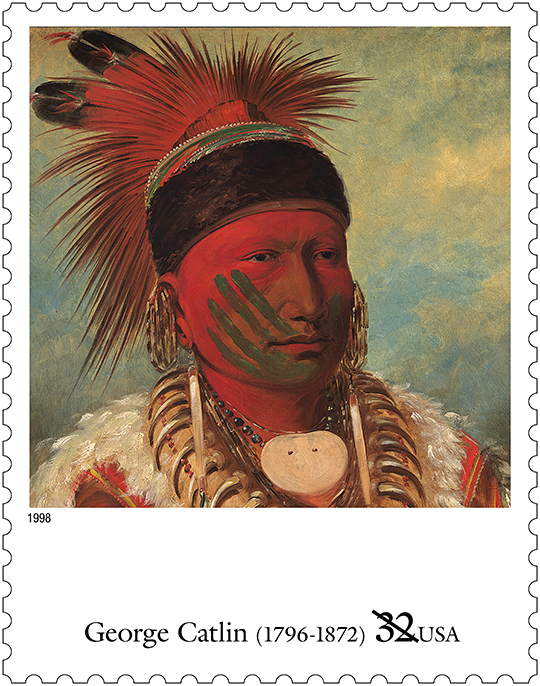Born in 1796 in Wilkes-Barre, PA, George Caitlin was a self-taught artist who was trained in Connecticut as an attorney, mostly following not his own dream, but that of his father. Deciding later on to defy his father’s wishes that he become a successful lawyer, Catlin pursued his passion of painting and creating portraits, mostly depicting the lives of Native Americans. Catlin is quoted as saying, “If my life be spared, nothing shall stop me short of visiting every nation of Indians on the Continent of North America.”
It seems that Catlin’s interest in Native Americans began in the early 1820, when he witnessed a delegation of Indians visiting in the Philadelphia area. At the time, Catlin’s means of supporting himself include painting miniatures. Catlin traveled to Missouri to meet with superintendent of Indian affairs and governor of Missouri Territory General William Clark in 1830, and was inspired by Clark’s Indian museum; Clark soon became his mentor. Catlin soon based his operations in St. Louis, visiting some 50 tribes during the course of five trips he made over a six-year time period beginning in 1830.
Some of the tribes Catlin visited over his journey which is said to have stretched over 2,000 miles of terrain include the Blackfeet, Ponca, Cheyenne, Mandan, Crow, and Assiniboine. Catlin’s passion was to record the American Indians’ noble faces; he was also fascinated by how they lived, particularly upon learning that buffalo provided not only food, but shelter and clothing for the tribes, who also sold or traded buffalo by-products.
Catlin lived among the tribes during the early and mid 1830’s, capturing their lives not only through paintings, but a journal he kept in which he recorded their customs. Upon his return to the east region in 1838, it is said that he had collected more than 500 paintings and artifacts into his Indian Gallery. He took his gallery on the road, touring in major cities which included Cincinnati, New York, and Pittsburgh. The income he drew in was not sufficient, and eventually Catlin took his gallery across the ocean for a tour of capitals throughout Europe.
In later years, financial troubles plagued Catlin, who was forced to sell his Indian Gallery in order to pay his bills. The collection was purchased by Joseph Harrison, an industrialist who had a Philadelphia steam boiler factory. The collection then sat in the factory where it went hidden and unnoticed, virtually useless. Catlin pleaded with the U.S. government to purchase his gallery, but his efforts were in vain. He finally returned to the U.S. in 1870, a widower and bankrupt. Today, many of Catlin’s artifacts, paintings, and maps are held in the Smithsonian.
During his lifetime, Catlin married Clara Bartlett Gregory in 1828 and fathered four children. While it is not known for fact, some of Catlin’s descendents and historians suspect that he had a family during his travels west with a woman of Native American descent.










